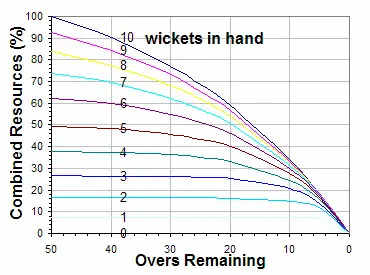What is DLS Method in cricket T20

The DLS method is an arithmetical formula in cricket to determine the target score in a match affected by rain in limited-over matches like T20s and ODIs. A just outcome will be ensured if the number of overs available for either or both teams gets reduced by rain or poor light.

The DLS method in T20 Cricket
In a regular game of T20, each side gets to play 20 overs. If an interrupted game resumes, the target score is set according to DLS by over and wickets remaining. Its basic principle was that a side's capacity for scoring runs relied on two critical resources:
Number of overs available
Wickets remaining
The DLS method assigns a resource percentage to each combination of overs and wickets. The available resources of the batting side are recalculated as soon as a match is shortened, and the target score is adjusted accordingly.
Important DLS Calculations
First Innings Rain/Overs
In case the first innings gets disrupted due to rain and overs are reduced, the target for the second innings will be changed by the revised total resources available.
Second Innings Rain
If rain stops play in the second innings, the score of the team at the time of interruption is compared to the revised target determined by the DLS method.
Multiple Interruptions
If rain affects both innings multiple times, DLS continuously adjusts the target using the latest resources available.
Example of DLS in T20
Team A scores 180/5 in 20 overs.
Rain reduces Team B's innings to 15 overs.
According to the DLS formula, the target could be looking at by Team B would be about 150 runs in 15 overs given the resource calculation.
Why is the DLS Method?
Ensures fair results in games affected by rain
It is based on time lost and wickets remaining.
Used in official T20 and ODI matches by ICC.
The DLS method, therefore, is widely recognized as providing a genuine adjustment of targets while maintaining competitiveness and balance in shortened games.



